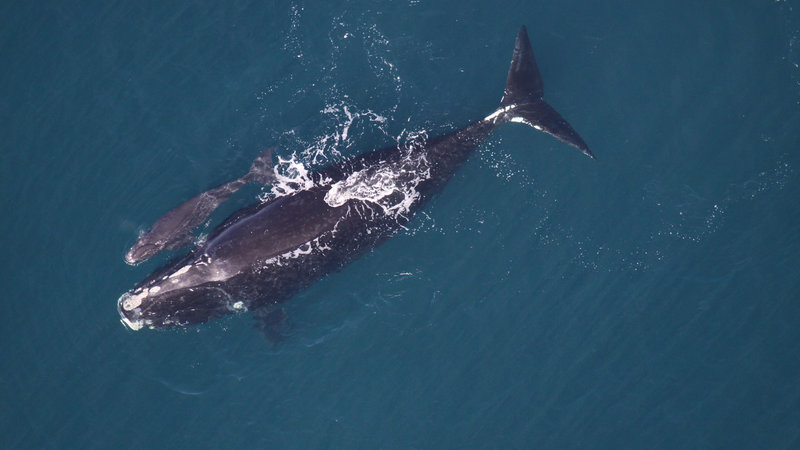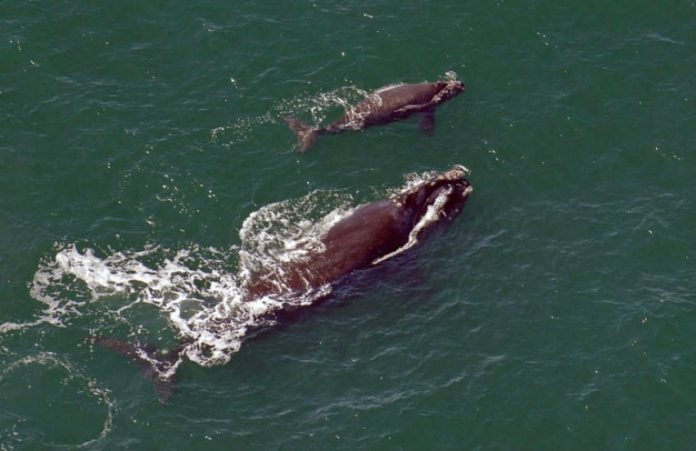Most of the southeastern coast is celebrating the first North Atlantic right whale calf sighting of the season. The news is a big deal, considering the fact that the North Atlantic right whale is critically endangered. Its total population is only about 450 and not a single right whale calf was spotted last season.
Where it was spotted
“The weather outside may be frightful, but endangered species observers with Coastwise Consulting were hard at work aboard the dredge Baypost when today, they spotted the first North Atlantic right whale calf of the 2018-2019 season!” the Florida Fish and Wildlife Conservation Commission’s Fish and Wildlife Research Institute wrote in a Facebook post over the weekend. According to the post, the whales were spotted moving north near the entrance to the St. Johns River off Florida’s coast. Researchers had spotted the mother off the coast of Georgia days before.
Why is it so important
According to a report on NPR, Barb Zoodsma, who has worked on right whales with the National Oceanic and Atmospheric Administration for over 20 years, said that last season (winter 2017-2018) was the first calf-less season she had ever seen, but it was not necessarily out of the question given the state of the right whale population. Zoodsma said there were only 94 breeding female right whales as of February 2018. “You don’t have to be Einstein to figure out that’s a bad situation,” she said.

On top of a lack of births, the right whale population has experienced an unsettling number of deaths. A technical memorandum issued by NOAA in September said that as of August, 19 right whales had died in 2017 and 2018. Only 5 calves were born during that same period.
According to that same NOAA report, “an encounter with fishing gear is the most frequent cause of documented right whale serious injuries and deaths in recent years.” For the 19 recent whale deaths, NOAA could determine a cause of death for 10. And of those 10 fatalities, five were caused by ship strikes and five were caused by entanglement in fishing gear.
One study cited by NOAA showed that nearly 85 percent of right whales have been entangled in fishing gear. For 59 percent of right whales, it has happened twice. And the number of entanglements has been trending upward.
A dwindling population
The NOAA memorandum says right whales, like other large whales, live for a long time and can breed multiple times over a lifetime. That makes them resilient. But the memo also points out the obvious fact that if a species fails to replace its dead with new births over time, it will have a difficult time recovering a dwindling population.
So reproduction – or rather, a lack of reproduction – is a major area of concern for researchers. And for reproduction, healthy mothers are required. According to NOAA, right whales now have greater distances to travel from their feeding grounds, which have shifted farther north, down to the areas off the coasts of South Carolina Florida and Georgia where their calving grounds are.
See the rest of the NPR article here.
FIND US ON FACEBOOK FOR ALL THE BEST OF BEAUFORT SC!










